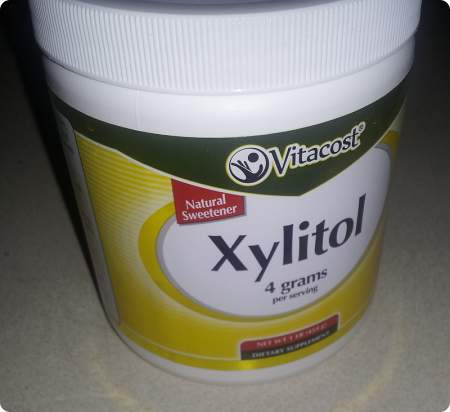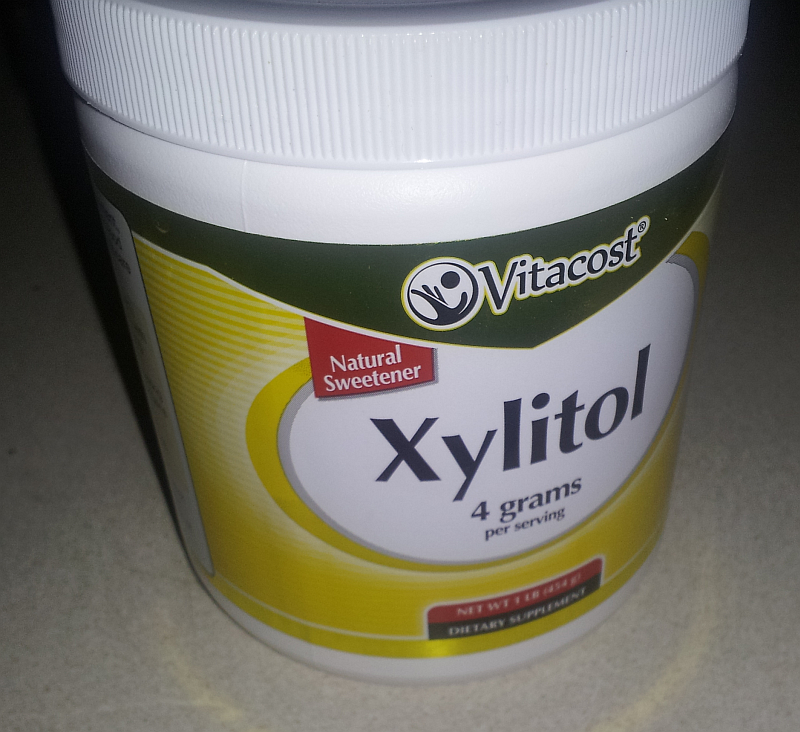Sweetening your water kefir with xylitol might seem like a great idea, especially for people with blood sugar issues, but you might reconsider if you have all the facts about this sugar replacement.

When I first hear about it, I was very excited to use a low calorie, low glycemic index sugar replacement. I bought two jars. Once the buying impulse cooled off, and my xylitol jars were shipped on their way to me, I started to expand my initial research. When I got my xylitol, I also tried my water kefir batch using xylitol to sweeten at the second fermentation. I found out with this occasion a few interesting facts, that made me understand that xylitol is not good for water kefir.
First of all, the recommended serving size is 4 grams, which is less than you would need in a normal water kefir cup. That’s not enough for a water kefir serving. Any more that the 4 grams per serving recommended, can give you serious side effects. I suspect that it could affect your intestinal flora very seriously, if consumed on a regular basis, and I’ll comment next why.
Xylitol is antibacterial, there are many research studies to confirm that without a doubt. Here is such a study. In fact, xylitol is added to many cosmetics as a preservative, and in many toothpaste formulations, as a bactericidal. I myself use xylitol in rare occasions to speed up lingering coughing. I use it as a gargle instead of antibiotics. These facts suggest that xylitol is not a good food for bacteria.
My own testing with xylitol, convinced me that it is not a good sugar replacement for fermenting water kefir. I tested a second fermentation batch of water kefir soda, and instead of using sugar, or fruit juice, I used xylitol. The batch stayed fresh, no spoiling, for more than a month, when I decided to discard it. There was a bit of fermentation in the first days, and I got some consistent fizz, but the fermentation stopped. Normally, the bacteria and yeasts in water kefir will eat all the sugar, and transform it into alcohol, acetic acid, and lactic acid. When fermenting with xylitol, there is no acid production, which pointed me to believe that microorganisms simply die in the presence of xylitol. Now, there is some organoleptic change in the soda, this happens in the first two or three days, so some of the microorganisms do feed on xylitol, but in my opinion is just a few of the numerous strains.

Stevia
There is no mention here of Stevia which is totally different than xylitol. Also, is it possible that you didn’t see further fermentation with your xylitol because the grains ran out of sugar to consume in the second ferment and not because the xylitol destroyed it?
Jenny,
Jenny,
I did not state that xylitol killed the cultures, or at least that’s not what I tried to say. The wording is a little ambiguous, I’ll correct that soon. What I wanted to say was that xylitol only feeds certain bacteria/yeasts in the tibicos.
In fact, it is known that sugar alcohols such as sorbitol, mannitol, xylitol, isomalt can alter microbiota because they selectively feed microbiome populations. My test was a simple confirmation of what science already proved.
Any thoughts on using the natural plant sweetener called Erithrytol?